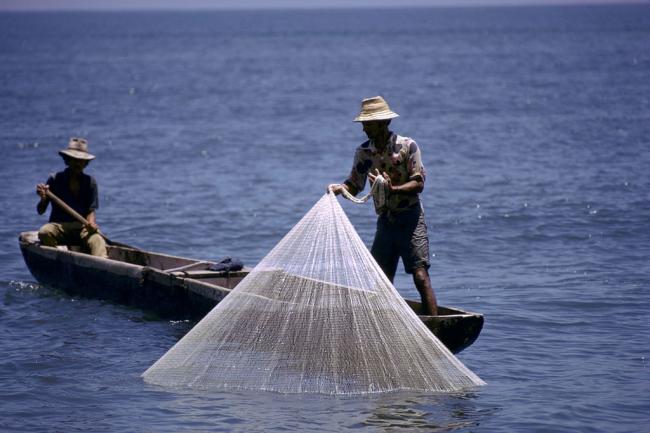
UN guidelines and new technologies boost efforts to help curb 'ghost fishing'
What is known as abandoned, lost and otherwise discarded fishing gear makes up a significant portion of all debris in the oceans, accounting for about one-tenth of all marine litter, translating into hundreds of thousands of tonnes annually.
Growing concern over this problem, coupled with the increasing availability of new technologies, has led the UN Food and Agriculture Organization (FAO) to begin developing international guidelines on the effective tagging of fishing gear as a way to cut down levels of troublesome sea trash.
Guidelines in the works
Past efforts to develop international guidelines have been largely fragmented. There are few systematic requirements by Governments for ownership marking of gear, and no international regulations, guidelines or common practices exist for marine areas outside of national jurisdictions. But that is starting to change, due to growing concerns of congestion in coastal waters, risks to safe navigation and accidental deaths of marine life.
In early April, an initial set of draft guidelines was discussed during a meeting of experts held at FAO's Headquarters in Rome. The results will be presented to FAO's Committee on Fisheries in July for review and direction regarding next steps.
“What we need is a simple and affordable system that permits easy identification of ownership of gear, fishery of origin and position of gear in the water,” said FAO Fishery Industry Officer Petri Suuronen. “The development of internationally recognized standards on marking all fishing gear will help us to better understand the reasons for gear loss and identify appropriate preventive measures.”
New technologies for tracking lost gear
On Thursday , advances in marking technology are offering new possibilities for efficient tracking and recovery of lost gear and are changing the way the problem is being tackled.
“The effective marking of fishing gear in busy multi-user sea areas is key to preventing its loss and protecting marine ecosystems,” Suuronen said. “Fishers can also benefit from the use of new gear tagging technologies which will allow them to minimize loss of potential catch and expensive equipment, and save time searching for lost gear.”
Coded wire tags (CWTs) are being tested as a potential tool for reducing entanglements of marine mammals, turtles and other large marine animals. The nano-sized, laser-etched CTWs are implanted in fishing ropes with no effect on fishing performance but making them detectable to special sensors.
Satellite buoys with solar power are now commonly used in industrial purse seine operations, providing unlimited range and extra-long operating time. Other sensors, like GPS receivers, can be attached to a radio buoy and used to transmit data.
Acoustic technology, which takes advantage of the sound transmission properties of seawater, also has applications in locating lost gear. Active pingers emit sounds at certain frequencies once in the water, whereas passive sonar reflectors capture and reflect sound energy back to its source.
Lights have long been an integral part of fishing gear markers for the night but on Thursday energy-efficient LEDs are being fitted with solar panels, amplifying their effectiveness.
Photo: World Bank/Edwin Huffman
Support Our Journalism
We cannot do without you.. your contribution supports unbiased journalism
IBNS is not driven by any ism- not wokeism, not racism, not skewed secularism, not hyper right-wing or left liberal ideals, nor by any hardline religious beliefs or hyper nationalism. We want to serve you good old objective news, as they are. We do not judge or preach. We let people decide for themselves. We only try to present factual and well-sourced news.







